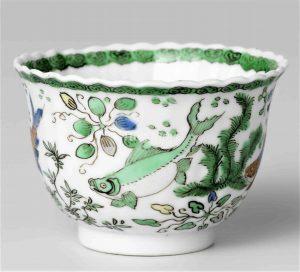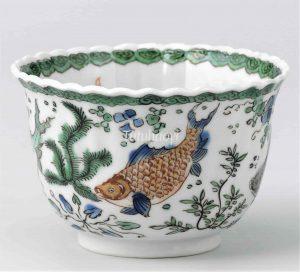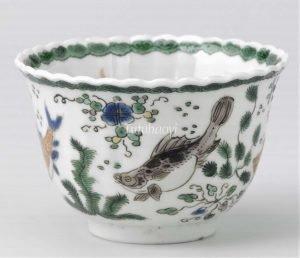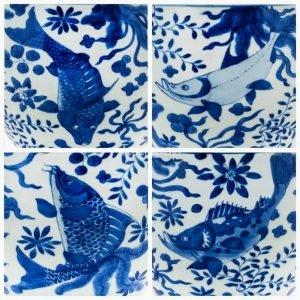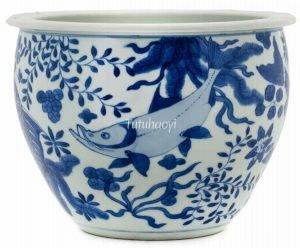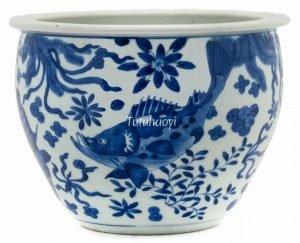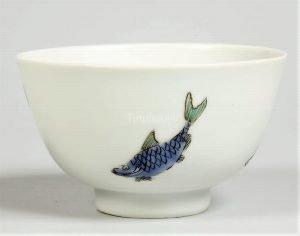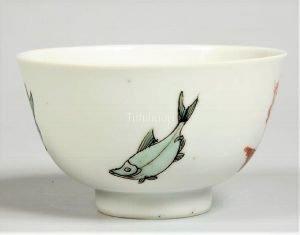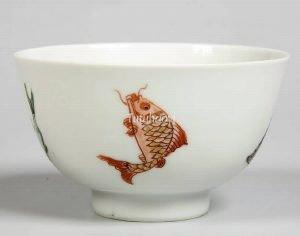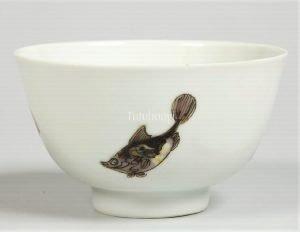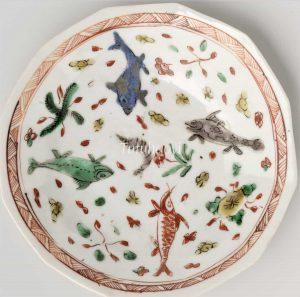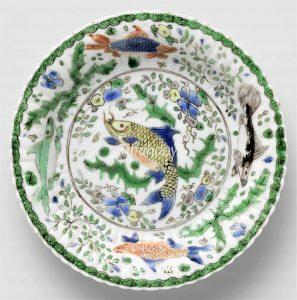May you remain pure, clean, and incorruptible
清白廉洁
© Tutuhaoyi.com owns the copyright of the description content for the images attached. Quoting all or part of the description content on this page is permitted ONLY IF ‘Tutuhaoyi.com’ is clearly acknowledged anywhere your quote is produced unless stated otherwise. (本页描述内容版权归Tutuhaoyi.com所有,转发或引用需注明 “Tutuhaoyi.com”, 侵权必究, 已注开源信息的条目除外。)
A gathering of four distinctively different fishes can be read as a pun rebus design expressing an admonishing message ‘qing bai lian jie 清白廉洁’, which literally means ‘pure, unblemished, incorruptible, and clean’.
The name of ‘qingyu 青鱼’, literally ‘blue fish’, puns on the Chinese character ‘qing 清’ for ‘pure’. ‘Baiyu 白鱼’ literally means ‘white fish’, having a white body and head. Its name is a homograph of ‘bai 白’ meaning ‘unblemished’. ‘Lianyu 鲢鱼’ means ‘chub’, whose name makes a pun on ‘lian 廉’ for ‘incorruptible’. The unmistakable ‘guiyu 鳜鱼 (mandarin fish)’ has a characteristic mottled appearance and undivided tail. The phonetic radical of the name of this fish is ‘jue 厥’, which puns on the character ‘jie 洁’ for ‘clean’.
The design may be served as a good wish for a promising official friend or a self-admonishing reminder as part of the interior decoration scheme in a conscientious official’s office or study. The actual design and the arrangement of the fishes may well vary since the design was a conventional one spread among manual labourers and folk artisans and everybody contributed their inspiration to the end product. However, a corpus of various versions of this theme reveals a clear pattern, prominently with the unmistakable mandarin fish and the white fish in it.
New research on the extant examples of this pun rebus design written by Dr Yibin Ni is published here.
Reference:
Jeffrey P. Stamen and Cynthia Volk with Yibin Ni, A Culture Revealed: Kangxi-Era Chinese Porcelain from the Jie Rui Tang Collection: Jieruitang Publishing. 2017, p. 200-201.
Fig 1-5: porcelain cup with underglaze blue and overglaze enamelled decoration, Kangxi period (1662 – 1722), courtesy of the Rijksmuseum, Holland
Fig 6-10: porcelain jar with underglaze blue decoration, Kangxi period ca. 1710, courtesy of the Jie Rui Tang Collection
Fig 11-15: porcelain bowl with overglaze enamelled decoration, Kangxi period (1662 – 1722), courtesy of the Bristol Museum & Art Gallery, the UK
Fig 16-17: porcelain dishes with underglaze blue and overglaze enamelled decoration, Kangxi period (1662 – 1722), courtesy of the Rijksmuseum, Holland
Fig 18: porcelain dish with underglaze blue and red decoration, Kangxi period (1662 – 1722), courtesy of the Rijksmuseum, Holland
Fig 19: porcelain dish with underglaze blue and overglaze enamelled decoration, Kangxi period (1662 – 1722), courtesy of the Rijksmuseum, Holland
Fig 20: porcelain bowl with underglaze blue and red decoration, Kangxi period (1662 – 1722), courtesy of the Rijksmuseum, Holland


